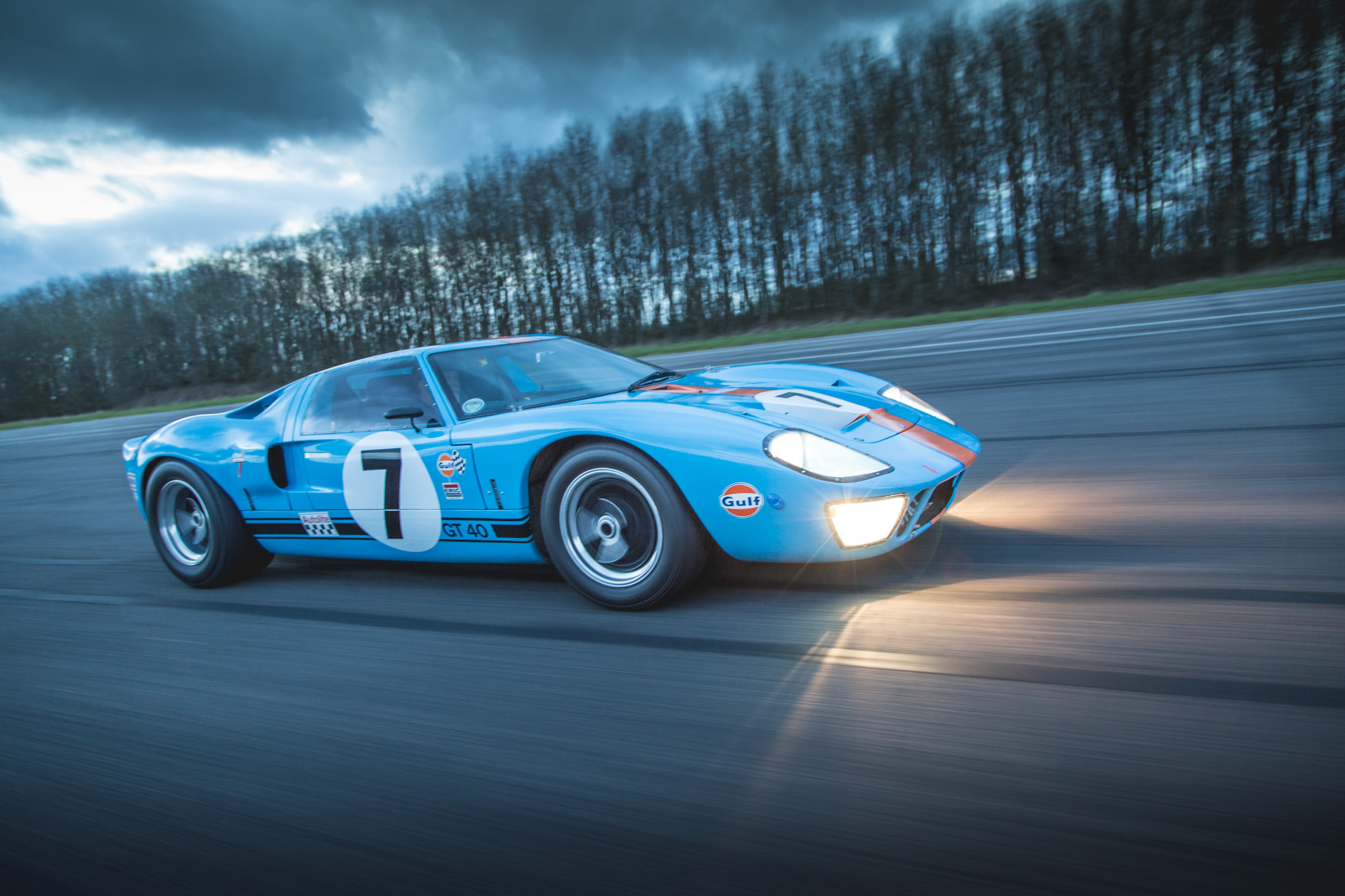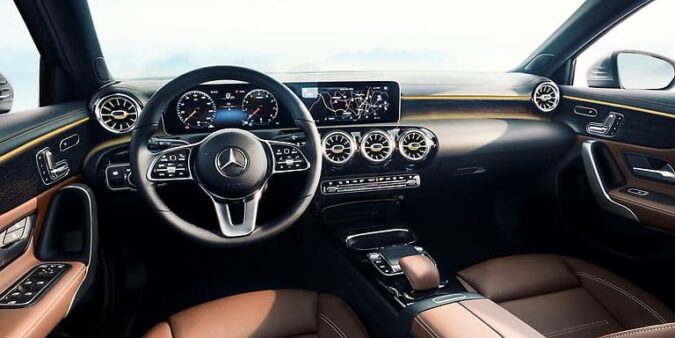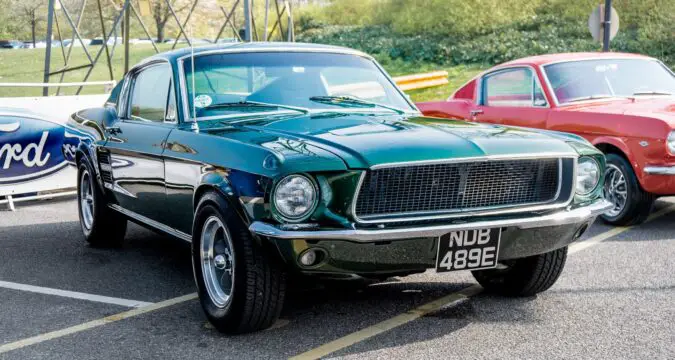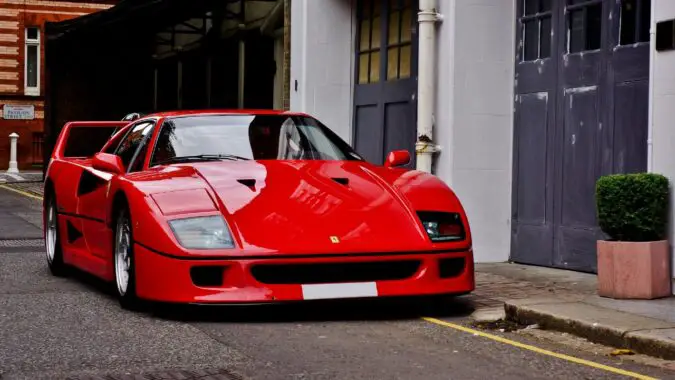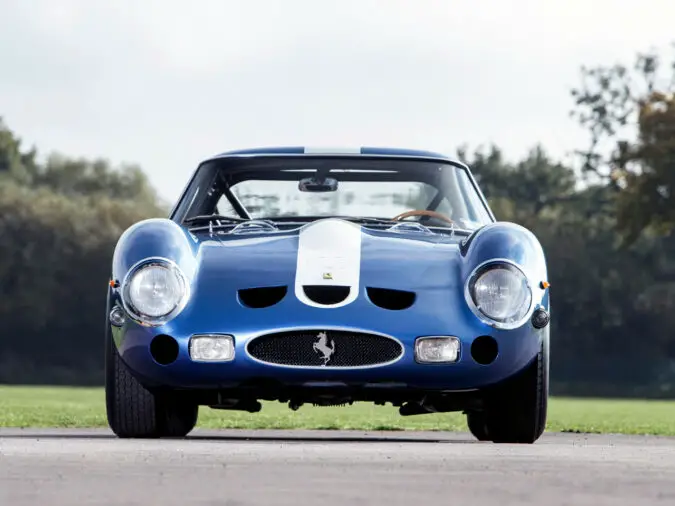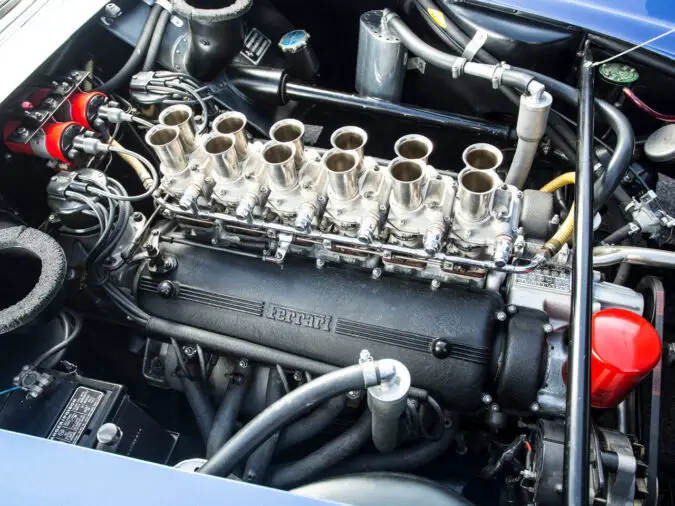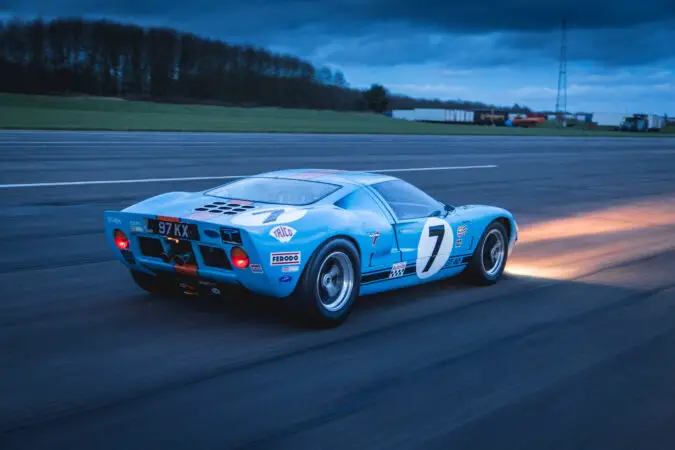Let’s re-evaluate the 21st century. Cars have become as technologically advanced as ever, which is a good thing. However, with the introduction of EVs and plug-in hybrids in modern cars, internal combustion engines are dying and becoming less popular day by day. As a result, cars have lost their mechanical feeling and not just character. Undoubtedly, we miss the golden age of the automotive world, where cars used to be a lot classier and more charismatic. Luckily, this article will be focusing on the most popular classic cars to ‘drive’ the face of the earth.
Nowadays, all manufacturers are rushing towards offering more and more technology in their vehicles. Even opening the glove box requires you to browse through various buttons and options on big TV-like screens. Moreover, cars have begun sharing the same body designs to the point where even an entry-level Mercedes A-class resembles the flagship Mercedes S-class.
Most of us are just looking for a trip down memory lane. A time when cars used to be a lot different and stunning to look at. A time when cars were defined by their charm instead of the amount of onboard technology and computers. Some classic cars bewitched spectators with their striking craftsmanship, while others claimed several championship titles and races under their names.
First of all, what are classic cars? What defines a classic car? A car needs to have a character and style to categorize as a ‘classic’. More importantly, a classic car needs to have a wow factor and rarity to create a legacy that could last generations.
All the cars in this article have their own stories, legacies, and characters. Dying to find out what? Let’s see.
Most Popular Classic Cars – Old Muscle Cars
The following popular classic cars lie under the category of “old muscle cars”:
Old Muscle Cars – Chevrolet Corvette
During its 64-year production run (and counting), the Chevrolet Corvette has gone through some ups and downs. Dubbed as ‘America’s sports car’, the Corvette has achieved the feat of becoming the most popular sports car in history. That said, there are some years to avoid and common flaws that affect the driving dynamics of the Corvette. But the best and most classic Corvette came in the second generation of its timeline.
Apart from providing value-to-money to its American customers, the C2 Corvette was fast and nippy through the corners. The second-gen Corvette (C2), especially the ‘Corvette Stingray’, gained even more popularity with its performance upgrades. The Corvette Stingray not only packed a roaring 327ci V8 but also a futuristic styling element that aged extremely well.
The hidden pop-up headlights, the fastback body design, and decent enough engine punch made the Corvette a perfect blend between performance and looks. Other performance upgrades included independent rear suspension, limited slip differential, and stiffer springs and shocks, which considerably enhanced the Stingray’s handling.
Couple that with a glorious-sounding V8 and the C2 Stingray was a worthy contender for youngsters’ bedroom wall posters. Nowadays, you can fetch a C2 Corvette Stingray (in excellent condition) for not less than $75,000. Nonetheless, the C2 Stingray’s massive appeal makes it a timeless classic and a must-have muscle car.
Old Muscle Cars – Dodge Charger
Nowadays, Dodge Chargers are known for boasting un-real horsepower figures thanks to their big Hemi-V8 engines. Packing more than 700 horsepower in a four-door sedan has just become a thing for Chargers. Throughout its generations, Dodge kept updating the Charger to keep it fresh and up-to-date. However, fans appraised one particular generation of the Dodge Charger the most. A generation that had won the hearts of several muscle car fans tenfolds.
After the first-gen Charger’s relatively disappointing sales, Dodge returned to the drawing board and updated the Charger. The result was a Charger with an even sleeker/slipperier design and performance upgrades under the hood. It’s a fact that there’s no other ‘classier’ Charger – or even muscle car – that Americans got their hands on.
Also, the second-gen Charger was the push that Dodge needed to affirm that it too was alive in the muscle car game. Later on, Dodge introduced the Charger Daytona to compete in the 1969 NASCAR races. And, thanks to its aerodynamic design, the Charger Daytona gave a tough time to its rivals.
The 23-inch tall wing at the Charger Daytona’s back helped it cross the 200mph barrier, which was very impressive back in the day. A good example of a classic Charger Daytona can set you back by more than $410,000. Even a good example Dodge Charger can cost you up to $150,000, making it a rare collectible among muscle car fans.
The Charger, thanks to its sheer muscle, looks, and appeal, also went on to feature in TV series and movies. The most prominent of them was the Fast and Furious film franchise. The second-gen Charger is – and has been – Dom’s pick throughout the major films of the franchise. Even today, the Charger’s deep grumbling V8 and mean looks own the streets.
Old Muscle Cars – Ford Mustang Shelby GT350
The successful launch of the first-gen Ford Mustang meant that Ford was off for a pretty good track. Ford focused more on providing a compact-sized family car that also offered excellent value-to-money. However, Caroll Shelby, founder of Shelby American Inc., had different plans for the Mustang.
After obtaining a license from Ford, Carol Shelby planned to make a sportier version of the Mustang. The result? The result was a Mustang with a complete change in character. Carol Shelby made a couple of changes (and improvements) to the Mustang’s engine. The changes later bore fruit when the Mustang Shelby pushed 306 horsepower.
Other improvements include improvements to the suspension setup, tires, brakes, and body panels. Dual-pin stripes ran across the Mustang Shelby’s centerline to differentiate it from other non-Shelby Mustangs. Later on, Shelby introduced a race-spec version of the Mustang Shelby (GT350R) to compete in SCCA races.
The GT350R, driven by none other than Ken Miles, maintained an impressive streak of three wins (in its class) at the SCCA competition. So, there’s quite a rich racing history attached to the Mustang Shelby GT350R. Recently, a 1965 prototype Mustang Shelby was auctioned for an impressive $3.85m, indicating how desirable the piece of machine is.
Most Popular Classic Cars – Old Ferrari
The following popular classic cars lie under the category of “old Ferraris”:
Old Ferrari – Ferrari F40
The introduction of the Ferrari F40 marked the 40th anniversary of Ferrari in the automotive world. Also, the Ferrari F40 was the last Enzo-approved Ferrari before Enzo’s death in 1988. More importantly, back when it was launched, the F40 was the most powerful Ferrari ever made. Similarly, the F40 succeeded the Ferrari 288 GTO; another extremely-rare Ferrari and a classic, no doubt.
The 2.9-liter twin-turbo V8 engine produced a healthy 471 horsepower and generated blistering fast speeds up to 202mph. Also, several weight-saving techniques, including radio delete and carbon-fiber doors, were introduced to shed unnecessary weight off of the F40. Therefore, it came as no surprise that the Ferrari F40 weighed just shy of 3000 lbs.
But the Ferrari F40 wasn’t only just stupendously fast, it also looked strikingly good. Luckily, the Ferrari F40 got the design treatment from the Italian design house company, Pininfarina. A downward-facing nose and a large wing at the back meant that the Ferrari cut through air like butter, while also looking the part.
Later on, an even more aerodynamic and race-equipped version of the F40 came into being. The Ferrari F40 LM (Le Mans) turned heads with its brutal fast acceleration speeds on straight lines and corners. Only 19 F40 LMs were ever built, which makes the F40 LM significantly rarer than the F40. In fact and recently, a Le Man’s participant F40 (LM) was auctioned and sold for an impressive €4.8m.
Old Ferrari – Ferrari 250 GTO
Giotto Bizzarrini was not only responsible for developing the Ferrari 250 GTO but also responsible for producing probably the greatest Ferrari of all time. The sleek and aerodynamic design worked in both ways: stability and sheer looks. Producing a humble 300 horsepower from its 3-liter V12 engine, the 250 GTO had all the power that you could need.
The result that came off the end of Giotto’s pen was an exquisite-looking Ferrari that could bewitch its spectators with its remarkable craftsmanship. Everything from the engine assembly to the gear stick was a feast to the eyes. However, it wasn’t just made to look the part; it was made to dominate tracks.
The Ferrari 250 GTO had a rather successful racing history. It won championships on a demanding track like that of Sebring’s. Moreover, it came second (and first in its class) in the 1962 Le Mans. It also won the Tour de France in the following two consecutive years.
The 250 GTO’s rarity, history, driving dynamics, and looks, make it a highly desirable ‘gem’ among the most prestigious car collectors. However, apart from rarity, one question stands in the way of getting your hands on one – price. Recently, a 250 GTO was auctioned and sold for a mind-blowing $70m, making it the most expensive car sold, ever.
Even by today’s standards, the 250 GTO offers outstanding mechanical grip and confidence to its drivers who dare push the $70m machine to its limits. The V12’s glorious sound also remains unmatched by others.
The V12 makes melodious notes, which are certainly better than what today’s twin-turbo V8s are offering. Some regard the Ferrari 250 GTO as the most classic car of all time, and to be honest, it’s hard not to agree with that statement.
Most Popular Classic Cars – Old Race Car
The following popular classic car lies under the category of “old race car”:
Old Race Car – Ford GT40
The Ford GT40 was the result of a deal that went wrong between two automotive giants – Ford and Ferrari. The Ford GT40’s history is what defines it and makes it perhaps the most legendary race car of all time.
In the 1960s, Ford and Ferrari decided to merge, with Ford holding the majority shares. However, a slight disagreement between the two caused a major turn of events. Eventually, and after a handful of abuses in Italian, the deal was canceled.
Feeling belittled, Henry Ford II called upon his best engineers to build him a race car that would crush Ferrari at Le Mans. More importantly, they needed to build a car that could last 24 grueling hours at Le Mans despite Ford’s reliability.
The original GT40 (Mk.1) featured the same V8 engine as the Mustang. However, despite the sleek shape, the aerodynamics weren’t right and the suspension setup could have been better. However, all three GT40s crashed leaving Ferrari the winner at Le Mans yet again.
Henry Ford, unable to digest the defeat, asked Caroll Shelby to develop the Ford GT40. Shelby requested his friend, Ken Miles, to drive the Ford GT40 at Le Mans. Miles heavily revised the GT40’s suspension, engine, handling, traction, and aerodynamics to match his likings.
After several hours spent on the track perfecting the GT40, Miles was ready for yet another race at Le Mans. This time around, the GT40s left the Ferrari drivers in their dust and won them (and America) their first win at Le Mans. The GT40 would go on to crush Ferrari for another three consecutive years.
So, the GT40 was Ford’s answer to putting Ferrari back in its place (sorry, Ferrari). Because of its deep-rooted history and importance, Ford GT40s have been shooting up in value.
Most Popular Classic Cars – Old British Cars
The following popular classic car lies under the category of “old British cars”:
Old British Cars – Aston Martin DB5
Aston Martin is known for making exquisite, luxurious, and classy cars that fill the appetite of those individuals looking to satisfy their ‘finer’ taste in cars. Therefore, the most recognizable Aston Martin among all Aston Martins is not a hypercar or a racecar. Instead, it’s a 2-door convertible, Grand Tourer (GT) car; a car slower than a Mustang of its era, but much classier. It’s the Aston Martin DB5.
The Aston Martin DB5 owes most of its success and popularity to the James Bond film franchise. To date, the DB5 has made its way into six Bond films. The first appearance of the DB5 on Hollywood screens dates back to 1964 in the Bond film, Goldfinger. The DB5 had everything that agent 007 could ever need; it was fast, grandiose, and (most importantly) classy.
The DB5, driven by a rather classy and gentlemanly British spy agent, feels as if it were made to be in the Bond films. The exterior body lines were kept smooth and subtle. And, from every angle, the DB5 looked (and still looks) breathtakingly beautiful and striking. Couple that with a British countryside-backroad setting and you’ve got yourself a perfect GT car that would make you feel no less than a secret spy agent.
The Aston Martin DB5 featured a 4-liter six-cylinder engine that made a respectable 282 horsepower. Later on, buyers could equip the DB5 with a Vantage engine, which improved acceleration speeds.
As you step inside the car, you are greeted by fine leather, gorgeous gauges, and stunning wooden trims. The world got to see only 1059 examples of the DB5, including 123 convertibles. Nowadays, DB5s can casually fetch prices of up to $1m – $2m. In fact, the exact DB5 featured in the film Goldfinger was auctioned and sold for an impressive £4.67m!
Most Popular Classic Cars – Old European Cars
The following classic car lies under the category of “old European cars”:
Old European Cars – Mercedes 300SL (Gullwing)
It was an American car importer, Maximillian Hoffman, who suggested Mercedes build a road-going version of a race car. Soon Mercedes got its best engineers, including Rudolf Uhlenhaut, behind the production of a soon-to-be special and legendary car.
The German engineers shoved a 3-liter straight-six engine into the tubular space frame, which in itself weighed just 50 kilos. As a result, the engine produced 215 horsepower and pushed the car from 0 to 60mph in 8.2 ~ 9.3 seconds depending on the differential ratio. In addition, the Mercedes 300SL reached a top speed of 163mph, making it the fastest production car of its time.
However, to make the best use of the power, the 300SL was extremely light and aerodynamic. The abbreviation SL stands for ‘super light’ and the German engineers couldn’t be more right. Consequently, the Mercedes-Benz 300SL tipped the scales at just over 1.3 tons.
However, the featherweight tubular body frame made it difficult to install side doors. Instead, Mercedes engineers came up with an even better idea: Gullwing doors.
Eventually, the result that came off the end of the German engineers was one of the most stylish and elegant-looking cars to ever exist. From the swooping side body lines to the low front end, the 300SL was (and is) a treat to the eyes.
Apart from looks, the 300SL also dominated races and competitions. In 1952, the 300SL won a one-two victory at Le Mans, followed by a 24-hr Nürburgring clean-sweep and a one-two victory at Carrera Panamericana, Mexico. Unfortunately, it was also the car that caused the crash disaster in 1955 at Le Mans.
Only 1,400 Mercedes-Benz 300SLs ever exist. Nowadays, a well-maintained (or a restored) 300SL can casually fetch prices of up to $1.9m. In fact, in 2012, an aluminum-bodied 300SL was auctioned for $4.62m!
Most Popular Classic Cars – FAQs
How Old Does A Car Have To Be To Be A Classic
To consider a car a ‘classic’, the car must be at least 20 years old. There are many organizations and clubs that have set different requirements and criteria before considering a car to be a classic. For instance, according to CCCA (Classic Car Club of America), a car must belong to an era between 1925 – 1948 before deeming it to be a classic. Similarly, the AACA (Antique Automobile Club of America) requires cars to age anywhere between 25 and 50 years to regard them as classics. Therefore, the AACA regards any car older than 50 as an ‘antique’. Also, apart from age, one may also consider other factors before calling a car a ‘classic’. For instance, you may regard a car as a classic in terms of its rarity, popularity, condition, and model quality. To conclude, age isn’t the only criterion to categorize a car as a classic.
What Is A Make Of A Car
The make of a car refers to the brand or manufacturer of the vehicle. For instance, the make of a Toyota Corolla is ‘Toyota’. In the same way, the make of a Honda Civic is ‘Honda’, while ‘Civic’ is the model name.
What Is The Coolest Car In The World
Assuming that there’s just one coolest car of all cars would be wrong. The ‘cool’ factor of a car can depend on several factors, including a car’s history, characteristics, and features. A cool car needs to look apart and offer the latest and greatest technology among other things. Cool cars can be sedans, hatchbacks, SUVs, trucks, supercars, hypercars, and even electric vehicles. For instance, according to many car enthusiasts, an Aston Martin Superleggera is the coolest car in the world. Aston Martins have been James Bond’s getaway cars; hence, their cool factor. Similarly, several others regard the Dodge Charger SRT Hellcat Widebody as the coolest car in the world for its sheer muscle looks and performance figures. In the same way, a Tesla Model 3 Performance is known for offering futuristic technology at an affordable price bracket; hence, its cool factor.
What Is A Car Model
The model of the car refers to the car name of the brand. For instance, the car model name of a Toyota Corolla is ‘Corolla’, while Toyota is the brand/make. Similarly, the model name of a Ferrari 458 is ‘458’, while Ferrari is the brand producing it.
What Was The First Vehicle Ever Made
The first vehicle in automotive history dates back as far as 1886. Karl Benz patented a three-wheeled gasoline-powered car (known as ‘Motorwagen’). The Motorwagen is also the first-ever vehicle to be powered by an internal combustion engine. Karl Benz also patented his car components including carburetor, gear shifters, and spark plugs. The Motorwagen originally cost 600 German marks (equivalent to $150 at that time). In 1887, the Motorwagen made its way into the commercial market. During the course of its 7-year production run, the world got to see only 25 Motorwagens.

